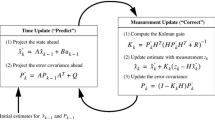Abstract
Motion sensing has now become one of the crucial parts of modern life. The tech products for entertainment create huge competition in the modern market, with the front runners such as game and handset manufacturers. Users can use their own bodies to control the systems without Conversational User Interfaces (CUIs) and Graph User Interfaces (GUIs). With many benefits, the technologies of NUI is getting more and more important, which also are usually accompanied by the sensor developments. Hence, system designers uses the sensors on the embedded platforms used to develop the system devices for different body movement control interfaces, such as using the gravitational sensor to control the systems or using touchscreen detection. However most of the body movement is restricted to the hand portion for the system platform, making it not as dynamic as the traditional monitor consoles. Thus, this restriction decreases the multitude and availability of controlling modes in system devices. In this study, a sensor-based gait recognition was proposed, in order to provide a novel natural user interface for control systems except the operating modes of gesture.












Similar content being viewed by others
References
Bergmann K , Kopp S (2010) Systematicity and idiosyncrasy in iconic gesture use: empirical analysis and computational modeling. In: Kopp S, Wachsmuth I (eds) Gesture in embodied communication and human-computer interaction. Springer, pp 182–194
Berman S, Stern H (2011) Sensors for gesture recognition systems. IEEE Trans Syst Man Cybern Part C: Appl Rev 99:1–14
Bhavani R, Sudha LR (2012) Performance comparison of SVM and kNN in automatic classification of human gait patterns. Int J Comput 6:19–28
Breniere Y, Dietrich G (1992) Heel-off perturbation during gait initiation: biomechanical analysis using triaxial accelerometery and a force plate. J Biomech 25(2):121–7
ElSayed M, Alsebai A, Salaheldin A, El Gayar N, ElHelw M (2010) Body and visual sensor fusion for motion analysis in ubiquitous healthcare systems. Int Conf Body Sensor Netw
Karaulova IA, Hall PM, Marshall AD (2002) Tracking people in three dimensions using a hierarchical model. Image Vis Comput 20:691–700
Kavanagh JJ, Menz HB (2008) Accelerometry: a technique for quantifying movement patterns during walking. Gait Posture 28(1):1–15
Lomb PG , Romaszewski M, Opozda S, Sochan A (2012) Choosing and modeling the hand gesture database for a natural user interface. In: Efthimiou E , Kouroupetroglou G, Fotinea S-E (eds) Gesture and sign language in human-computer interaction and embodied communication, volume 7206 of lecture notes in computer science. Springer, Berlin Heidelberg, pp 24–35
Mann S Smart clothing: wearable multimedia computing and personal imaging to restore the technological balance between people and their environments MIT Media Lab
National Taiwan University Medical Department Global Medical Net 2005 Website: http://ntuh.mc.ntu.edu.tw/bh/department/pmr/
Peng P, Chen E Dance with Your Hands ESE350 2011 Final Project, University of of Pennsylvania
Sae-Bae N, Ahmed K, Isbister K, Memon N (2012) Biometric-rich gestures: A novel approach to authentication on multi-touch devices. In: Proceedings of the 2012 ACM annual conference on human factors in computing systems, CHI ’12. ACM, New York, NY, USA, pp 977–986
Zijlstra A, Goosen JHM, Verheyen CCPM, Zijlstra W (2008) A body-fixed-sensor based analysis of compensatory trunk movements during unconstrained walking. Gait Posture 27(1):164– 167
Acknowledgments
The authors would like to thank the National Science Council of the Republic of China, Taiwan for supporting this research under Contract NSC 101-2628-E-194-003-MY3, 101-2221-E-197-008-MY3 and 102-2219-E-194-002. This study is also conducted under the Institute for Information Industry which is subsidized by the Ministry of Economy Affairs of the Republic of China.
Author information
Authors and Affiliations
Corresponding author
Rights and permissions
About this article
Cite this article
Chiang, HP., Lai, CF., Lai, YH. et al. A sensor-based feet motion recognition of graphical user interface controls. Multimed Tools Appl 75, 14125–14141 (2016). https://doi.org/10.1007/s11042-015-2615-4
Received:
Revised:
Accepted:
Published:
Issue Date:
DOI: https://doi.org/10.1007/s11042-015-2615-4




